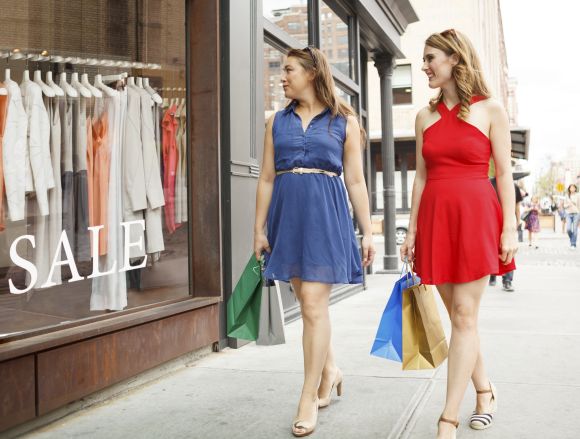Last week we talked about the top 5 retail real estate trends to watch this year, but we didn’t talk about the actions these trends are challenging leading retailers to take.
If these actions are taken and properly executed, they can not only help reinvent brick and mortar shopping, but also help retailers develop and strengthen their offerings both in and around the physical store.
What are these actions?
- Be Both Here & There – a lot has been written about how digital has been one of the principal disrupters in retail. And while this may be true, the reality is that digital means that your store’s footprint now reaches far beyond its physical walls, whether you’re taking advantage of it or not.
Consumers are interacting and finding out about brands in entirely new ways thanks to the combination of smartphones, tablets and social media channels.
Facebook, Instagram, and Pinterest, for example, have morphed into direct lines for retailers to talk to their customers or potential customers – meaning that these channels need to become spaces that facilitate transactions with one simple click of a button or tap of a finger.
Retailers need to satisfy all shopping preferences – from the in-store shopper to the online-only shopper – by making sure products are readily-accessible from anywhere.
This can be achieved by leveraging all relevant social and mobile platforms in order to close the gap between product delivery and purchase intent on various channels – online, brick and mortar and even print – which allows customers to easily buy from wherever they are.
Retailers must meet customers on their terms in meaningful, engaging ways across all mediums in order to capture and maintain their attention. - One-Of-A-Kind – while in-store shopping has many benefits, online retailers have a leg up on brick and mortar retailers due to the extensive amount of data they have at their fingertips, allowing them to customize and personalize the online experience for every customer.
However, what some brick and mortar retailers fail to realize is that they, too, have customer data available that will help them to transform their customers’ shopping experience from one that is one-size-fits-all to one that is tailored for every customer.
Consumers now have the expectation that when they go shopping they will see products and merchandise that is aligned with their individual preferences and become irritated with irrelevant materials.
In fact, according to the CMO Council, 54% of consumers would end a relationship with a retailer if they didn’t receive customized, relevant content and offers.
These are just two of many actions retailers need to explore to take advantage of emerging retail trends. However, these two actions, as well as every other possible action, have one major theme in common – the customer.
You see, regardless of whether actions are being taken for a better digital/omni-channel strategy or a better in-store experience, knowing who your customers are will be the difference between a successful outcome and an unsuccessful one.
The ultimate goal of knowing who your customers are is gaining a real understanding of what your customers want and how they behave as opposed to what you think they want and how you think they behave. This allows you to focus limited budget resources on the channels and shopping experiences most aligned with customer behavior.
Because when a retailer is able to deliver an experience that meets their customers’ expectations, customers are happy. And when customers are happy, they spend more and become more loyal.
When it’s all said and done, everything comes down to a pretty simple question – how are you getting to know your customers and what will you do with that knowledge?
Understanding who your customers are is our specialty. If you’re curious to learn more about your customers and how to better reach them, let’s talk.



